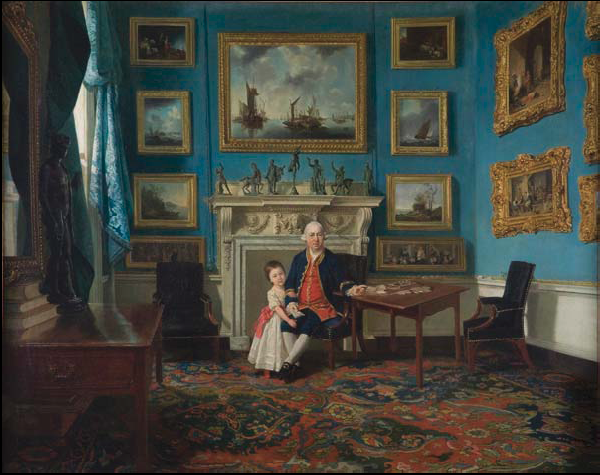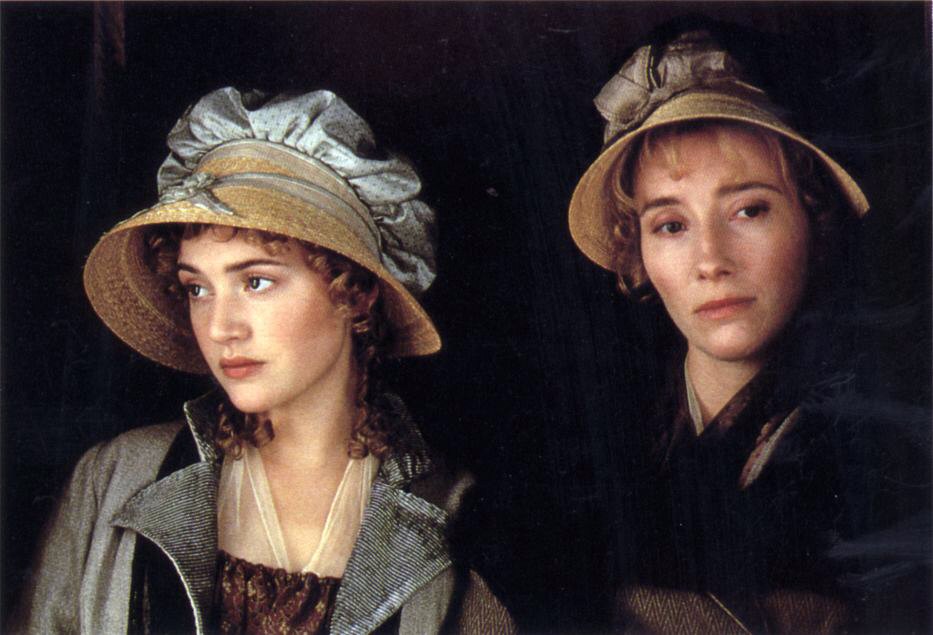Ian Hislop's Stiff Upper Lip, BBC Two | reviews, news & interviews
Ian Hislop's Stiff Upper Lip, BBC Two
Ian Hislop's Stiff Upper Lip, BBC Two
A history of a celebrated bit of British anatomy lets it all hang out
Shouldn’t it be a stiff lower lip? When a person loses control of his or her emotions, and gives in to the instinct to blub, the telltale sign is not the unstiffening of the upper lip but the wobbling of the lower. In short, we have been saddled with a national characteristic that is an anatomical inaccuracy. It was an American who got it wrong in the late 19th century. But that’s not until next week.
Ian Hislop has more or less perfected the decorous tele-essay. Programmes on Victorian bankers and philanthropists have come at social history not from the ground up or the top down, but sideways in via anecdote, observation and vignette. In this latest root around our past, Hislop attempts a kind of psychological profile of the British character across the centuries. Although he started with Erasmus in 1499 noting the English eagerness to kiss at every opportunity, the real story begins from, roughly speaking, the moment we embarked on a quest to rule the waves at the start of the 18th century.
 Thus Robinson Crusoe, did anyone but know it, was a prototype of the sort of sturdy Brit who in centuries to come would keep calm and carry on. But for the remainder of the Age of Reason Defoe’s lonesome hero was hardly the gold standard. In Georgian England it was ever so de rigueur for gents to show their refinement by emoting all over the shop, while ladies’ kerchiefs were soaked through thanks to the newfangled tearjerker known as the novel. The cult of sensibility, so-called, legitimised and even codified sentiment. Hislop noted Sir Lawrence Dundas publicly displaying affection for his grandson in Zoffany’s portrait (pictured above right).
Thus Robinson Crusoe, did anyone but know it, was a prototype of the sort of sturdy Brit who in centuries to come would keep calm and carry on. But for the remainder of the Age of Reason Defoe’s lonesome hero was hardly the gold standard. In Georgian England it was ever so de rigueur for gents to show their refinement by emoting all over the shop, while ladies’ kerchiefs were soaked through thanks to the newfangled tearjerker known as the novel. The cult of sensibility, so-called, legitimised and even codified sentiment. Hislop noted Sir Lawrence Dundas publicly displaying affection for his grandson in Zoffany’s portrait (pictured above right).
But it was another canvas of Zoffany’s which illustrated the kind of behaviour up with which the British would not put. As depicted in his Plunder of the King's Wine Cellar, the unbridled excesses of the French Revolution equated emotion with radical fervour and, ever so gradually like snails sensing danger, the British ruling classes deemed it seemly to retreat into their shells. This volte-face was captured in the two great heroes of the Napoleonic Wars. As he was whupping the French up and down the Med, Nelson shagged and wept with 18th-century abandon. Why, he even asked a fellow to kiss him on his deathbed. By the time Wellington put Boney's army unequivocally to the sword, the British had a new kind of steely icon to revere and emulate. Hence the discreet manly tears of British sailors at his funeral. On in Wellington’s obituary the Morning Chronicle referred approvingly to “the ice of [his] character”.
 Meanwhile, back at home the more admirable protagonists of Jane Austen fought out their own battle with dangerously unrestrained emotion. In Sense and Sensibility she created in the Dashwood girls (Kate Winslet and Emma Thompson pictured left) a yin and yang of emotional incontinence and doughty reserve, whereafter all her heroes and heroines tended to conform to the latter type while her less trustworthy characters let it all hang out.
Meanwhile, back at home the more admirable protagonists of Jane Austen fought out their own battle with dangerously unrestrained emotion. In Sense and Sensibility she created in the Dashwood girls (Kate Winslet and Emma Thompson pictured left) a yin and yang of emotional incontinence and doughty reserve, whereafter all her heroes and heroines tended to conform to the latter type while her less trustworthy characters let it all hang out.
This first episode was an entertaining account of the birth of British reserve, with Hislop a witty guide wearing his considerable knowledge lightly. The piss-off tropes of modern presenting, usually there to make up for a lack of archive footage, have been pared to a minimum. Hislop marches purposefully in and out of shot a lot, and there’s the odd cartoon graphic, but for the most part story and storyteller have been trusted to do it their way. It is of course all important stuff. Why on earth else would we have heard from an academic representing something called the Queen Mary Centre for the History of the Emotions?
Explore topics
Share this article
Add comment
The future of Arts Journalism
You can stop theartsdesk.com closing!
We urgently need financing to survive. Our fundraising drive has thus far raised £49,000 but we need to reach £100,000 or we will be forced to close. Please contribute here: https://gofund.me/c3f6033d
And if you can forward this information to anyone who might assist, we’d be grateful.

Subscribe to theartsdesk.com
Thank you for continuing to read our work on theartsdesk.com. For unlimited access to every article in its entirety, including our archive of more than 15,000 pieces, we're asking for £5 per month or £40 per year. We feel it's a very good deal, and hope you do too.
To take a subscription now simply click here.
And if you're looking for that extra gift for a friend or family member, why not treat them to a theartsdesk.com gift subscription?
more TV
 Slow Horses, Series 5, Apple TV+ review - terror, trauma and impeccable comic timing
Jackson Lamb's band of MI5 misfits continues to fascinate and amuse
Slow Horses, Series 5, Apple TV+ review - terror, trauma and impeccable comic timing
Jackson Lamb's band of MI5 misfits continues to fascinate and amuse
 Coldwater, ITV1 review - horror and black comedy in the Highlands
Superb cast lights up David Ireland's cunning thriller
Coldwater, ITV1 review - horror and black comedy in the Highlands
Superb cast lights up David Ireland's cunning thriller
 Blu-ray: The Sweeney - Series One
Influential and entertaining 1970s police drama, handsomely restored
Blu-ray: The Sweeney - Series One
Influential and entertaining 1970s police drama, handsomely restored
 I Fought the Law, ITVX review - how an 800-year-old law was challenged and changed
Sheridan Smith's raw performance dominates ITV's new docudrama about injustice
I Fought the Law, ITVX review - how an 800-year-old law was challenged and changed
Sheridan Smith's raw performance dominates ITV's new docudrama about injustice
 The Paper, Sky Max review - a spinoff of the US Office worth waiting 20 years for
Perfectly judged recycling of the original's key elements, with a star turn at its heart
The Paper, Sky Max review - a spinoff of the US Office worth waiting 20 years for
Perfectly judged recycling of the original's key elements, with a star turn at its heart
 The Guest, BBC One review - be careful what you wish for
A terrific Eve Myles stars in addictive Welsh mystery
The Guest, BBC One review - be careful what you wish for
A terrific Eve Myles stars in addictive Welsh mystery
 theartsdesk Q&A: Suranne Jones on 'Hostage', power pants and politics
The star and producer talks about taking on the role of Prime Minister, wearing high heels and living in the public eye
theartsdesk Q&A: Suranne Jones on 'Hostage', power pants and politics
The star and producer talks about taking on the role of Prime Minister, wearing high heels and living in the public eye
 King & Conqueror, BBC One review - not many kicks in 1066
Turgid medieval drama leaves viewers in the dark
King & Conqueror, BBC One review - not many kicks in 1066
Turgid medieval drama leaves viewers in the dark
 Hostage, Netflix review - entente not-too-cordiale
Suranne Jones and Julie Delpy cross swords in confused political drama
Hostage, Netflix review - entente not-too-cordiale
Suranne Jones and Julie Delpy cross swords in confused political drama
 In Flight, Channel 4 review - drugs, thugs and Bulgarian gangsters
Katherine Kelly's flight attendant is battling a sea of troubles
In Flight, Channel 4 review - drugs, thugs and Bulgarian gangsters
Katherine Kelly's flight attendant is battling a sea of troubles
 Alien: Earth, Disney+ review - was this interstellar journey really necessary?
Noah Hawley's lavish sci-fi series brings Ridley Scott's monster back home
Alien: Earth, Disney+ review - was this interstellar journey really necessary?
Noah Hawley's lavish sci-fi series brings Ridley Scott's monster back home
 The Count of Monte Cristo, U&Drama review - silly telly for the silly season
Umpteenth incarnation of the Alexandre Dumas novel is no better than it should be
The Count of Monte Cristo, U&Drama review - silly telly for the silly season
Umpteenth incarnation of the Alexandre Dumas novel is no better than it should be

Comments
Erasmus definitely a neat